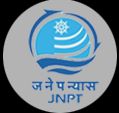https://www.freepressjournal.in/business/union-amc-aims-to-double-its-aum-in-fy-2022-to-launch-money-market-fund-soon
Union AMC’s Pradeepkumar aims to double its AUM in FY 2022; to launch money market fund soon

Union AMC aims to double its AUM in FY 2022; to launch money market fund soon | Abhishek Khorgade
G Pradeepkumar, who has been with Union Asset Management Company (AMC) since its inception, has around three decades of experience in the Mutual Fund Industry.
As the company gears up for its next phase of growth, Pradeepkumar, Chief Executive Officer of Union AMC, is optimistic that this growth will be in line with the processes set by the company. Pradeepkumar in an interview with FPJ’s Jescilia K and RN Bhaskar, shed light on the change embraced by the company.
Edited excerpts:
Union AMC is an unusual AMC with Dai-ichi Life and Union Bank as co-sponsors. Tell us more about this joint venture.
Over the last three years, a number of things have changed for the company. Obviously, the first big event was Dai-ichi Life coming on board, after our earlier foreign partner pulled out. Dai-ichi Life partnership worked well for us as they pumped capital, making us financially stable.
Dai-ichi Life gave us complete operational freedom. In the past, we had a very restrictive distribution model. Post Dai-ichi Life, we were able to expand our distribution. This allowed us to operate like any other AMC in the market and also compete.
Dai-ichi Life was quite impressed by the way Union AMC managed money. They also allocated some part of its India allocation from Dai-ichi Life, Japan. This has worked wonders for us.
There was constant support from Union Bank all along. The big development was the amalgamation of Union Bank with Corporation Bank and Andhra Bank. While all of them have pan India presence, they have a stronghold in some regions in the country. All of a sudden the bank branches for mutual fund distribution for Union AMC had doubled. The number of customers doubled as well.
After the bank’s amalgamation, Union AMC had to gear up for the expansion. This is because it is not easy to service so many branches on our own.
Our sales team also doubled last year. There are two reasons for this: Union Bank became much stronger and wider, and second we are trying to expand our distribution channel outside Union Bank.
Is the process set by the company the reason behind Union AMC’s three-year rate of return being very high?
Absolutely, under this process, we are trying to make an above-average return in every category.
We are not among the top three or top five. But it may happen if we are consistently above average. Meanwhile, if you suddenly aim to become top three or top five, you may take risks that are unacceptable. The AMC is handling public money and we are not in a game where we have to show off our skills. We need to remember that it is the hard-earned money of millions of people and we are conscious about that. This is the reason we stick to the processes.
For instance, we look at around 1,000 companies with a bare minimum market capitalisation of Rs 500 crore. Then we apply the business, management and valuation filter to it. After companies pass these filters, only then do the companies make it to the Union mutual fund house universe. We have around 190 companies in that universe. So, the fund manager can pick up stocks only from this universe.
Returns are not in our control. I cannot predict the rank of our funds. I can only assure the way we can manage funds: by the way we select stocks, the way we create portfolios and the way we manage risk. In the last three years, we have not deviated from that process even once.
Having a state-run bank as a co-sponsor, can you say no to investing in specific stocks because you have such processes in place? How do you handle that pressure?
For the last 11 years that I have been with the company and the company have been operating as a mutual fund for 10 years, I am happy to say that to date nobody — including our sponsors — has said what to do and what not to do. No single case has been pushed to buy or sell.
Whatever be the public perception of a public sector bank, I can say that the bank has allowed us to operate as a professional organisation. They have maintained the stance that you’ll know to run the business. So, you’ll run it and if you need help we are there. The Union Bank, MD takes interest in Union AMC at the board level and not at the operational level. We are fortunate that way.
How many branches do you have?
We have a skeletal team and have offices in 18 locations. However, we have a sales presence in 120 locations.
Where do your Assets Under Management (AUM) stand today?
It has been pretty good growth for us. Union AMC’s AUM stands at Rs 7,000 crore. Our goal is to hit Rs 10,000 crore of AUM this year.
Last year, we ended at Rs 5,000 crore. We set a target of doubling our AUM this year. So, we have already crossed 40 per cent of our journey. So, in the remaining eight months, we should be able to cover the remaining 60 per cent.
Even though the AUM is low compared to the industry, we have been successful in garnering retail investors and assets. We have one per cent market share when it comes to unique investors in the country. Especially with the help of Union Bank, we have been able to reach parts of the country and have got onboard unique investors that many players have not been able to reach.
When we launch an NFO or any other campaign, we have found that around 65-70 people have been first-time investors in mutual funds.
Currently, the bulk of our assets are in equity, hybrid and long-term debt categories — more retail-oriented funds. We would like to improve our position in the institution segment. That is an area that we have to work on. We have a liquid and overnight fund. But we will soon be launching a money market fund this month. We expect it to become very popular among institutional investors as well as high net worth individuals (HNI) as a parking vehicle.
We strengthened our institutional team last year. So, we will make significant progress there as well. So, the Rs 10,000 crore target will have a large share coming from institutional investors this year.
How many employees do you have?
We have around 200 plus employees and we increased our employees by 30-35 per cent in 15-18 months. We have invested significantly in our investment team.
At the time when the industry was slowing down, we went on the front foot and hired more people, and doubled our sales team. We went all aggressive and that paid well for us.
What are the other opportunities in the AMC business?
Offshore business is a good line of business with good margins and is scalable. Similarly, PMS and AIF should be good opportunities. Then pension fund management is another opportunity. AMC today has multiple lines of business that can be pursued. As Union AMC, we will also pursue some of these opportunities as we go along.
What is happening on the fixed-income side?
On the fixed-income side, we revamped our process there as well. It is a highly researched and number-driven segment. We do look at credit rating but at the same, we have a robust internal process.
The current situation of the market is such that the stress has not disappeared for many companies. Thus, we believe it is important to be cautious on the fixed-income side. We do take calculated risks. While it is our job as fund managers to take risks, at this point in time, we think we should play it safe. Thus, all our portfolios are carrying papers (government or AAA-rated) with the highest credit rating today. We pay a lot of emphasis on the liquidity of the portfolio.
On the fixed-income side, the underlying market is not particularly liquid. Our corporate bond market is still relatively illiquid. Keeping that in mind, we have created portfolios where our entire fixed-income portfolio if necessary can be liquidity in a maximum of three days. We believe that is important. Liquid funds are managed by that mindset where we take a calculated risk. But portfolio quality is extremely important. We go beyond the credit ratings and apply our own yardsticks.

Which are the sectors Union AMC is keeping away from?
We follow a bottom-up approach. We do not go the top-down way. So, the sector underweight and overweight positions that you would see in our portfolios are the outcome of our bottom-up stock selection.
At present, the way our portfolios are positioned — we are underweight on financials, utilities, and material; and we are overweight on sectors such as information technology, telecom, and industries.
What is the share of business you get from the banking channel as against other channels?
Historically, around 95 per cent of our retail customers came through our sponsor bank—associated distributor and the rest from outside. Last year, it came down to the ratio of 60:40.
The distributor community has widely appreciated the investment process that we are following and the outcome produced. The share of independent distributors in our business is steadily increasing. I will not be surprised if we achieve a 50:50 ratio this year.
Due to the present regulations, MF can hedge its funds with direct equity holding overseas. Your view.
We definitely believe in diversification. The opportunities that are available through GIFT city are very promising. One can use a liberalised remittance scheme or invest in foreign securities, however, it will become a lot easier and cheaper if you go through the GIFT city route. Transaction costs are very high when you deal with a foreign broker. Opportunities to trade in foreign securities from our own soil will help to expand the market. So, I think the Mutual Fund industry including Union AMC should make use of this. There could be funds dedicated to that. However, in the case of Union AMC, we are not considering diluting any of our existing funds. We may look at launching a new fund to make use of that opportunity.








































COMMENTS